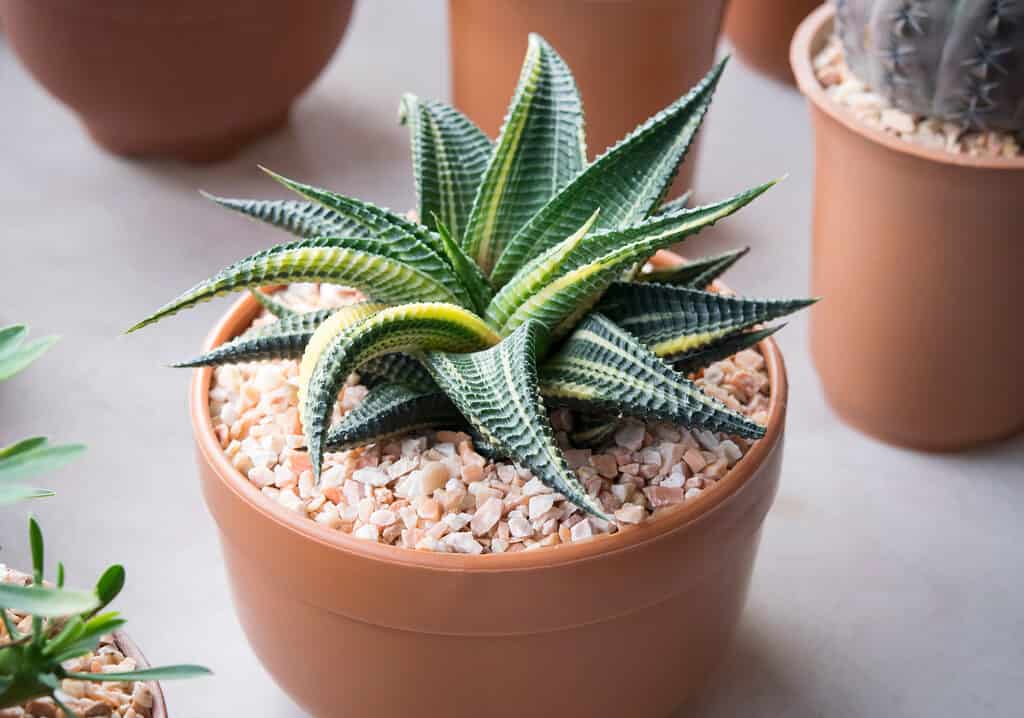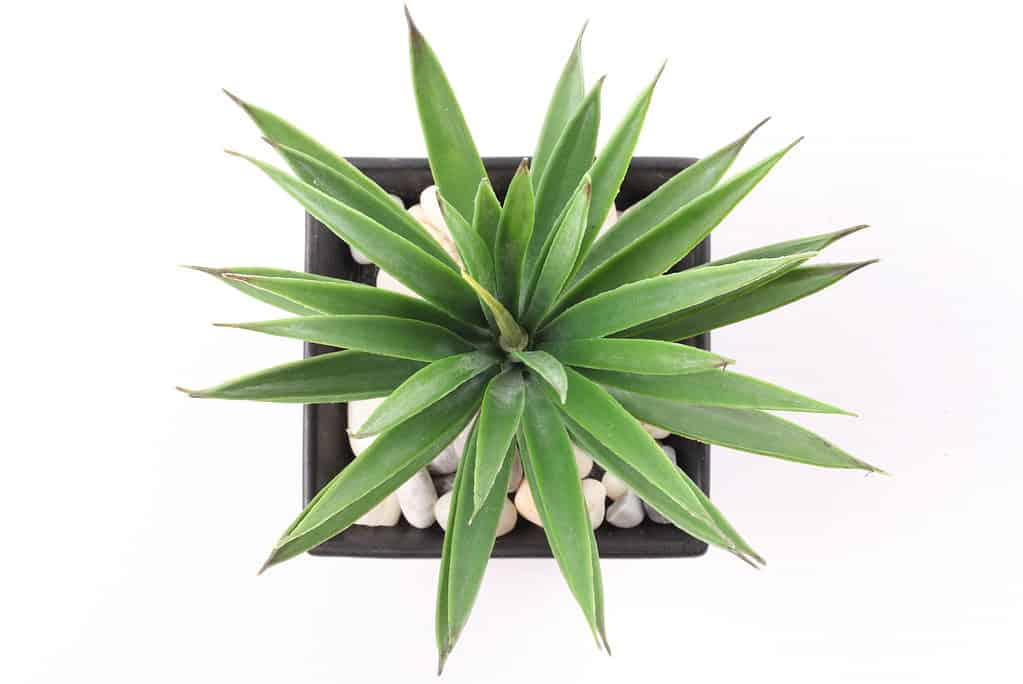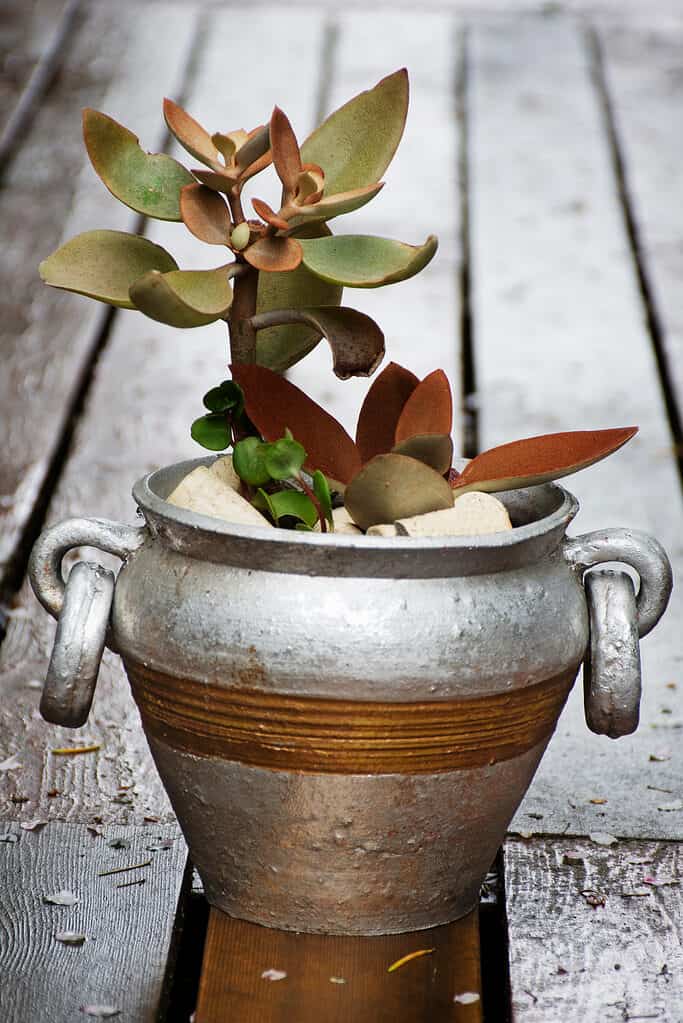Whether you’ve been keeping up with the latest gardening trends or are an experienced gardener, you’ve probably heard about succulents. They’re a type of plant that can survive in any environment and are super easy to take care of. They’re also great for apartment dwellers who don’t have much space to grow plants because they don’t need a lot of sun or water.
Some varieties of succulents also thrive inside. These indoor succulents can make great houseplants for people who don’t have green thumbs or just want something easy to care for.
You can get your hands on some of the most interesting and beautiful plants in the world, but if they’re not in a place where they’re going to thrive, they’ll die. So, if you’re just starting with indoor gardening and don’t know what kind of plants will work for you yet, or want a refresher on succulents, read on. You’ll find amazing plants that grow well indoors without requiring much maintenance.
We’ve compiled a list of our favorite indoor succulents so that you can take some inspiration from us as you start (or add to) your collection and watch them grow!

1. Aloe Vera
We had to start with aloe vera! Aloe vera is one of the easiest succulents to grow indoors. It’s forgiving, so you don’t have to fuss over it too much. It’s known for its ability to treat skin conditions and heal burns.
What does aloe vera look like? The typical aloe succulent grows 12-18 inches and has spiny, light green leaves. The thick leaves contain a gel-like substance. In addition, aloe vera produces petite yellow flowers during the winter.
Aloe vera grows best in pots or hanging baskets filled with potting soil and placed in full sun. When planting aloe vera in pots, use a good quality commercial potting mix that contains perlite or sand for drainage. When planting the seedlings, the potting mix should be moist but not wet or soggy.
The aloe vera plant is considered to be native to the Arabian Peninsula but has been widely cultivated around the world. It can be used as an accent piece in your home or office or as a centerpiece on your dining table. It looks great with other succulents and plants but also stands alone nicely.
The fleshy gel in the leaves of aloe vera contains minerals, vitamins, antioxidants, and amino acids and has medicinal benefits, including:
- Antibacterial and antioxidant properties
- Can treat ulcers in the mouth
- Helps the skin retain moisture and aids in healing skin conditions, such as relieving sunburn.

Aloe vera is one of the easiest succulents to grow indoors and is known for its gel’s ability to treat skin conditions.
©iStock.com/klenova
2. Haworthia
Growing haworthia is an easy way to add color and texture to your indoor plant collection. These succulents are the perfect addition to rock gardens and are great for bringing a little bit of the desert into your home.
Haworthia is a genus of succulent plants that are native to Southern Africa. They belong to the same subfamily, Asphodeloideae, as aloe and have similar physical characteristics. Not only do these beautiful succulents thrive outdoors in rocky, dry areas, but they also do very well indoors and don’t require much attention. That’s because they don’t tolerate full sun well. Outdoors you can find them hiding in the shade under the cover of other plants.
There are 150 species of haworthia, and they come in various shapes and sizes, such as:
- Baker haworthia: These fuzzy, ball-shaped succulents grow in a rosette shape. They grow delicate white flowers in the spring.
- Concolor: They have dark green leaves that lighten towards the center and white speckles throughout. The blooms are white that develop spikes in the spring.
- Koelmaniorum haworthia: This striking haworthia variety has thick, fleshy leaves and a crackled appearance similar to aging clay.

There are 150 species of haworthia succulents of various shapes and sizes.
©Nooumaporn/Shutterstock.com
3. Panda Plant
It can be hard to find plants suited for indoor growing, but panda plant succulents are an excellent choice because they are so easy to care for. They need very little water, and they have few pests or diseases that would bother them indoors. This is also a succulent that thrives on neglect. If you forget about it for too long and don’t water it enough, it will wilt slightly and recover again when you give it more water.
Panda plants (Kalanchoe tomentosa) are so fun because they look like little pandas when they’re full-grown. Their leaves have a circular shape that makes them look like ears or paws, and their stems tend to be thick, giving them an extra-chubby appearance. The red-rimmed leaves also grow silvery hair. Plus, they come in all kinds of colors and varieties. The options are endless!
If you’re looking for something whimsical but still colorful and unique for your home’s decorating scheme, then these plants are just what you need. Panda plants are native to Madagascar and a favorite among succulent growers.

Panda plants thrive on neglect and don’t require much attention to survive.
©Shao-ping Huang/Shutterstock.com
4. Bird’s Nest
Bird’s nest plants are native to western Africa, but they’ve become popular as houseplants around the world. In addition, they have decorative elements in interior design because of their unique appearance and ability to thrive in dry conditions.
Bird’s nest has thick leaves, making them perfect for use in terrariums or other small containers where you need something that can hold its own without requiring much watering or pruning. In addition, they have golden-green leaves that form in a beautiful open rosette. When planted, their deep green leaves grow upwards and split into three sections resembling a bird’s nest.
But what makes them such great plants for indoors? They’re hardy and easy to care for, so even if you don’t have much experience with gardening, you can still enjoy the fruits of your labor. They also require very little sunlight: just 3 hours per day will do the trick! Plus, they don’t need a lot of water; once every two weeks should be enough to keep them happy.
So whether you’re looking for something new to add to your living space or want to try growing something fun without spending too much time or money on it (we know how expensive things can get!), bird’s nest succulents are definitely worth checking out!

Bird’s nest succulents grow golden-green leaves that open into a beautiful rosette that resembles a bird’s nest.
©Bilalstock/Shutterstock.com
5. Agave
It’s hard not to love agave plants — they’re tough, strong, and resilient. They can withstand drought conditions and even high temperatures without wilting or browning, as other plants might do in similar circumstances.
Agave succulents, also known as century plants, are a great addition to any indoor or outdoor garden. They’re perfect for people who don’t have a lot of patience for watering and pruning. Their growth is slow and steady, so you won’t have to do much besides give them a little TLC every now and then.
Agave originates from Central and South American semi-tropical regions, and the genus has hundreds of species. There are large varieties that grow up to 10 feet tall and others that fit into small pots. Some are stiff and hard with blue-green leaves, while others have no spines with soft leaves. You can even find beautiful varieties with gold markings to add shine to your collection of succulents.
Agave salmiana can get used to produce tequila, and the practice dates back to pre-Hispanic times. It can also get refined into a sugar alternative. However, raw agave sap is toxic to pets and people, so be careful where you grow agave plants.

There are 270 species in the agave genus, which are found in various shapes and sizes.
©Moolkum/Shutterstock.com
6. Copper Spoons
Copper spoons are gorgeous succulents that you can grow indoors. Their scientific name is Kalanchoe orgyalis, and common names include “leather plant” and “cinnamon bear.” You can find them in the wild in Africa and Madagascar, and they have been cultivated for centuries as houseplants and ornamental plants because of their beautiful colors and patterns.
They’re called copper spoons because of their shape and color. Their leaves are pointed and velvety in shape and texture. It has a gray-bronze color underneath the leaf and a reddish-brown color on the top. Copper spoons can grow up to 6 feet tall, but many are smaller when grown in small pots indoors.
Copper spoons are easy to grow, but they need a little care when it comes to watering them. They prefer soil that’s on the dry side, so be careful not to overwater them. If you see your copper spoon starting to wilt, try giving it some water if the soil is dry or less water if it is still moist until it starts looking better again!

Copper spoons have bronze-colored leaves in the shape of spoons.
©Badon Hill Studio/Shutterstock.com
7. Jade Plant
The jade plant (Crassula ovata) is a succulent plant commonly grown indoors in most parts of the world. It’s easy to grow, and it doesn’t require a lot of sunlight. They are native to South Africa, specifically the Eastern Cape and Kwazulu-Natal provinces.
Jade plants have thick, shiny leaves with a waxy texture and can grow 3-6 feet tall. The leaves are jade green but will change to a wood-like brown as they age. If they get exposed to a lot of sunlight, the edges of the leaves can turn red, making the color variety elegant and beautiful.
The jade plant produces white, star-shaped flowers in the winter with a stalk that grows around half an inch long. It’s a great houseplant for gardeners with busy schedules because it requires very little care. The leaves are thick and fleshy, so they store water and don’t need watering as often as other houseplants. And the jade plant grows slowly, so you can keep it in the same pot for years without having to repot it or worry about it outgrowing its space.
Jade plants grow best in a soil mixture with sand added to it so they can absorb water easily without worrying about overwatering issues that some succulent plants, such as cacti might have.

Like other indoor succulents, jade plants will thrive with 4-6 hours of sunlight each day.
©Olga Miltsova/Shutterstock.com
Summary of 7 Popular Indoor Succulents
Here’s a recap of the seven indoor succulents finding plenty of fans.
| Number | Succulent | Native Habit | Appearance |
|---|---|---|---|
| 1 | Aloe Vera | Arabian Peninsula | Grows to 12-18 inches; has spiny, light green, thick leaves containing a gel that can treat skin conditions |
| 2 | Haworthia | Southern Africa | There are 150 species of haworthia, which come in various shapes and sizes. |
| 3 | Panda Plant (Kalanchoe tomentosa) | Madagascar | Leaves have a circular shape that makes them look like ears or paws; stems tend to be thick, giving them an extra-chubby appearance |
| 4 | Bird’s Nest | Western Africa | Deep green leaves grow upwards and split into three sections resembling a bird’s nest |
| 5 | Agave | Central and South American semi-tropical regions | There are 270 species in the agave genus, which are various shapes and sizes. |
| 6 | Copper Spoons (Kalanchoe orgyalis) | Found in the wild in Africa and Madagascar | Bronze-colored leaves are in the shape of spoons; can grow up to 6 feet tall |
| 7 | Jade Plant (Crassula ovata) | South Africa | Has thick, shiny leaves with a waxy texture; can grow 3-6 feet tall |
Final Thoughts
It’s no secret that succulents are having a moment. These plants are everywhere, from high-end design shows to your local drugstore. And they’re not just being used in the garden — they’re also taking over our homes!
There are many reasons to grow indoor succulents. They’re low-maintenance, hardy plants that can thrive in various conditions and look great in just about any space. They’re also a great addition to your space if you’re looking for an easy way to add some color without the high maintenance that comes with some other plants.
But we love indoor succulents because they’re just downright cool: they have a lot of texture and personality. So, if you agree, now you’ve read all about these popular succulents, it’s time to get your hands on some!
The photo featured at the top of this post is © Alice Rodnova/Shutterstock.com
Sources
- Medical News Today, Available here: https://www.medicalnewstoday.com/articles/318591#canker-sores
- National Library of Medicine, Available here: https://pubmed.ncbi.nlm.nih.gov/23240939/
- Wikipedia, Available here: https://en.wikipedia.org/wiki/Asphodeloideae
- Wikipedia, Available here: https://en.wikipedia.org/wiki/Haworthia
- Wikipedia, Available here: https://en.wikipedia.org/wiki/Kalanchoe_tomentosa
- Wikipedia, Available here: https://en.wikipedia.org/wiki/Agave
- Liquor, Available here: https://www.liquor.com/a-guide-to-other-agave-spirits-5271518
- Wikipedia, Available here: https://en.wikipedia.org/wiki/Crassula_ovata
FAQs (Frequently Asked Questions)
How do you keep succulents alive indoors?
Give your succulents between 4-6 hours per day. Plant them in well-draining soil and water them once every 2 weeks. Inspect your plants regularly and keep them clean using a small, soft brush.
Can succulents live without sunlight?
Each species is different. Some prefer full sunlight or partial shade, while others don’t need sunlight at all. Most succulents will begin to deteriorate within 2 weeks of no exposure to sunlight.
How often do succulents need to be watered indoors?
Water your succulents every 2 weeks. However, you should water your succulents once a month during the cold winter months as the plant is dormant.
How long can indoor succulents go without water?
Succulents can survive without water for 1-3 months. However, this time frame will vary according to species and time of year.
Thank you for reading! Have some feedback for us? Contact the AZ Animals editorial team.






